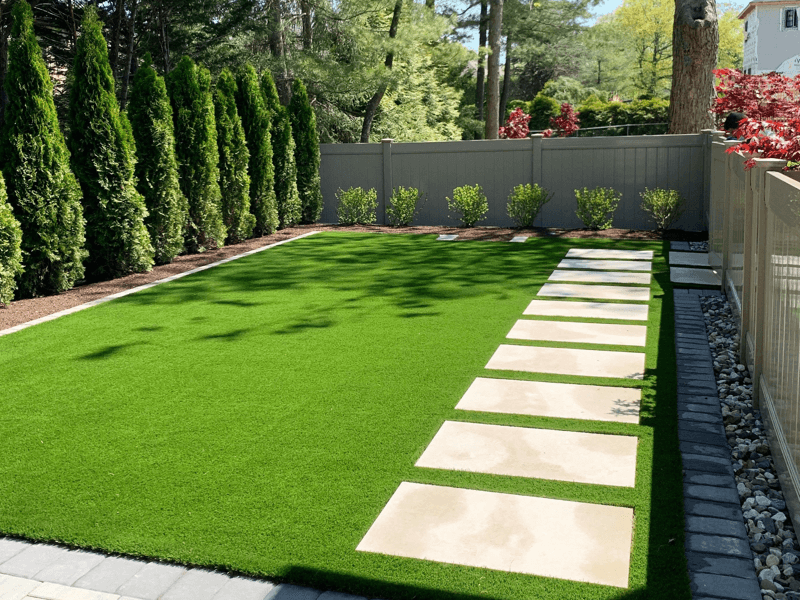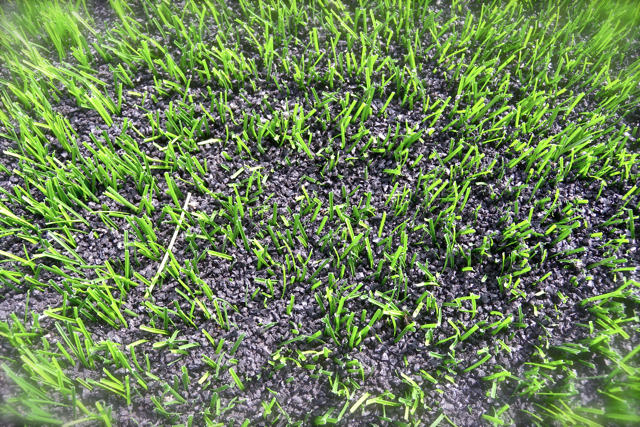Explore the Environmental Benefits of Opting for Artificial Grass Solutions
The fostering of synthetic grass options offers a compelling possibility to resolve pushing ecological difficulties. By considerably minimizing water usage and minimizing the application of dangerous chemicals, these options not just promote lasting landscape design yet additionally shield local environments. The reduced carbon footprint connected with reduced upkeep activities contributes to an extra lasting strategy to land monitoring. The implications of these advantages extend past mere conservation initiatives, increasing concerns concerning their long-term influence on habitat preservation and total ecological equilibrium. Exploring these measurements exposes an intricate interaction worth taking into consideration.
Water Conservation Perks
One of the most significant advantages of synthetic grass is its capacity to preserve water. In comparison, fabricated lawn does not need watering, considerably decreasing the total demand for water resources.
By getting rid of the demand for regular watering, man-made grass adds to lasting landscape methods and aids minimize the ecological impact of extreme water usage. Moreover, the conservation of water expands to the decrease of drainage, which can result in dirt disintegration and waterway pollution.
In addition, the installment of synthetic grass permits towns and house owners to assign water sources much more efficiently, concentrating on essential uses such as alcohol consumption water and farming. The shift towards synthetic grass not just promotes responsible water usage however also straightens with broader ecological objectives targeted at preserving natural deposits.
As communities significantly prioritize sustainability, the water preservation advantages of artificial grass provide an engaging case for its adoption in domestic and commercial landscaping tasks.
Reduced Chemical Use
The shift to synthetic grass significantly lowers the reliance on chemical treatments frequently made use of in natural grass maintenance. Typical lawn monitoring typically includes the application of pesticides, herbicides, and fertilizers to promote development and control parasites. These chemicals can present dangers to human health, neighborhood wild animals, and the environment, adding to soil and water contamination.
In contrast, fabricated lawn gets rid of the requirement for these damaging materials. As soon as mounted, it requires very little maintenance, mainly including regular cleaning and infrequent infill replenishment. This decrease in chemical usage not just benefits the immediate atmosphere but likewise adds to wider eco-friendly stability. By reducing the release of synthetic substances right into the ecosystem, synthetic grass advertises much healthier soil and water supply.
Furthermore, the lack of chemical runoff related to fabricated lawn installations aids safeguard local rivers from pollution, supporting water life and preserving biodiversity. Phoenix turf companies. As areas significantly focus on lasting practices, selecting synthetic lawn presents a viable service that aligns with ecological preservation goals. Via this shift, residential property proprietors can appreciate lush environment-friendly rooms without compromising eco-friendly health and wellness, leading the method for an extra lasting future
Reduced Carbon Footprint

Moreover, the installment of synthetic grass can result in considerable water preservation. Natural grass need significant quantities of water for irrigation, which not only includes to the carbon impact associated with water removal and therapy however also stress regional water resources. On the other hand, man-made lawn needs minimal upkeep, needing no watering, therefore substantially decreasing water usage and its connected power prices.
Additionally, the durability of synthetic grass adds to its lower carbon influence. With a life expectancy of as much as 15 years or more, the demand for regular substitutes is lessened, leading to less waste and lower power consumption in production and throwing away conventional turf choices. Generally, man-made lawn presents a lasting option for eco mindful landscaping.
Environment Conservation
Environment conservation is an essential consideration in the discussion over landscaping options, specifically when comparing fabricated grass to natural lawn. Natural lawn lawns commonly need considerable upkeep, consisting of the usage of herbicides, fertilizers, read and pesticides, which can negatively influence local communities. These chemicals can seep into the soil and rivers, damaging native plants and animals and interrupting neighborhood environments.
Synthetic turf eliminates the demand for damaging chemicals, thus securing neighboring wildlife and keeping the integrity of surrounding communities. The installment of man-made grass can lead to the conversion of previous yard areas right into even more biodiverse landscapes, such as pollinator yards or indigenous plant locations, which can sustain neighborhood wildlife.
Ultimately, the transition to synthetic grass not only conserves water and reduces upkeep efforts however likewise cultivates an extra unified relationship between human activities and the all-natural atmosphere, advertising habitat conservation in the process.
Long-Term Sustainability
Long-term sustainability is an important variable in reviewing the advantages of synthetic grass over conventional lawn yards. Among the most significant advantages of synthetic grass is its resilience; it can last as much as 15-20 years with marginal upkeep, whereas all-natural lawn calls for constant reseeding and substitute. This longevity minimizes the requirement for constant resources, such as water, plant foods, and chemicals, which are necessary for keeping a healthy and balanced yard lawn.
In addition, synthetic grass adds to a decrease in carbon discharges linked with lawn treatment equipment. Typical grass commonly call for gas-powered mowers, leaners, and blowers, every one of which add to air contamination. Arizona artificial turf. In comparison, synthetic grass eliminates the need for such equipment, promoting a cleaner atmosphere
Moreover, the production of synthetic grass progressively uses recycled products, enhancing its sustainability account. As manufacturers embrace green methods, the ecological impact of synthetic grass continues to diminish.

Verdict
The fostering of synthetic grass solutions provides substantial environmental benefits, including substantial water conservation, lowered dependence on dangerous chemicals, and a lower carbon footprint. Moreover, synthetic grass her comment is here help in preserving all-natural habitats by minimizing land disruption and promoting lasting sustainability via using durable materials. Jointly, these elements emphasize the potential of artificial lawn to add positively to environmental health and offer a sensible option to standard landscape design methods in an increasingly resource-conscious globe.
In contrast, artificial grass does not need watering, considerably lowering the total need for water Discover More sources. By reducing the release of synthetic compounds right into the ecosystem, artificial lawn promotes healthier dirt and water systems.
Additionally, the setup of synthetic lawn can result in considerable water preservation. In contrast, artificial lawn requires marginal maintenance, calling for no watering, therefore dramatically lowering water use and its connected power expenses.
